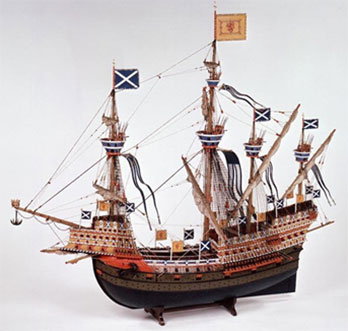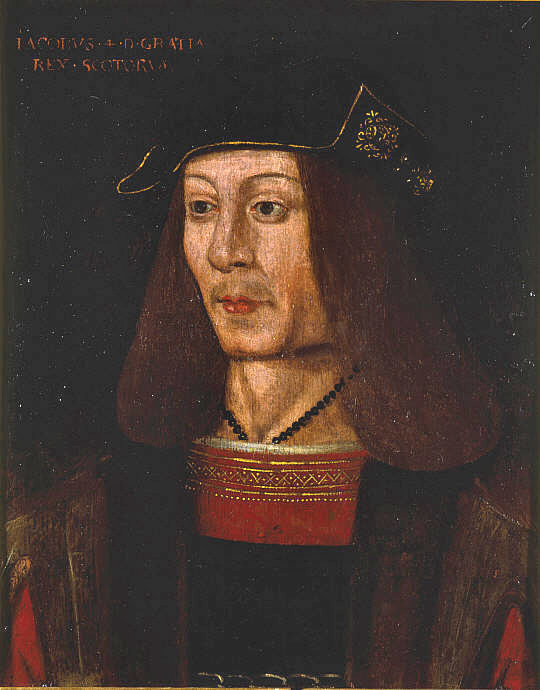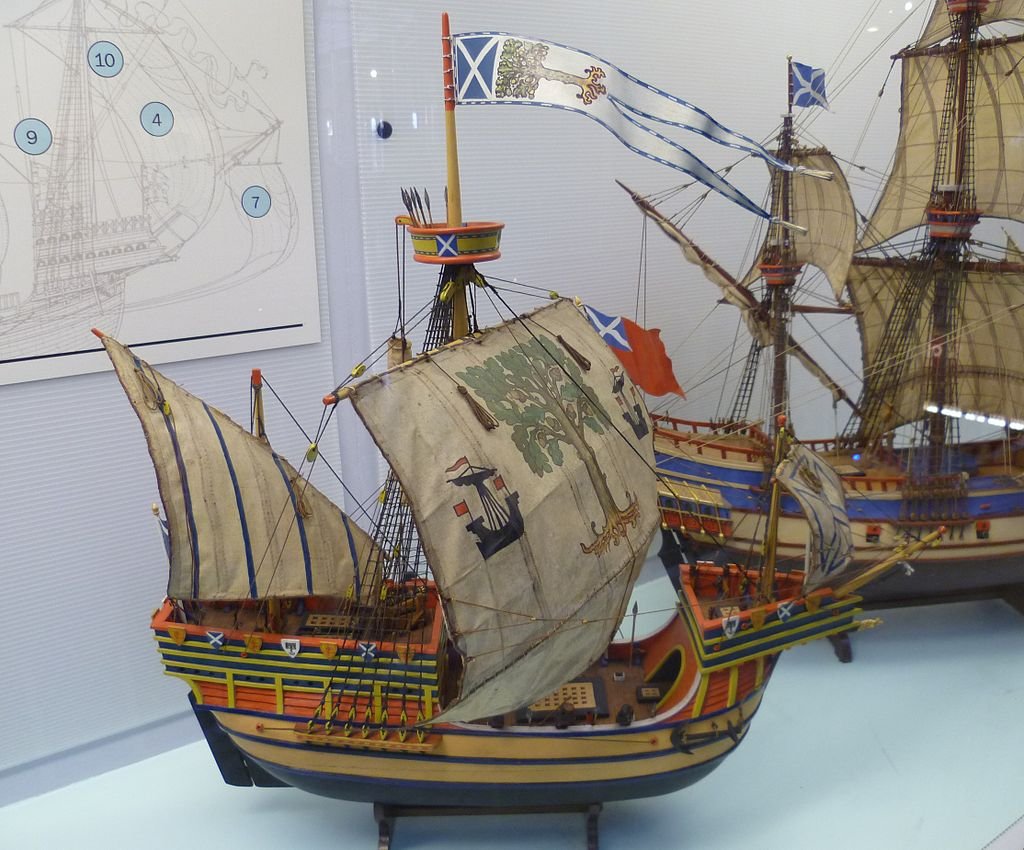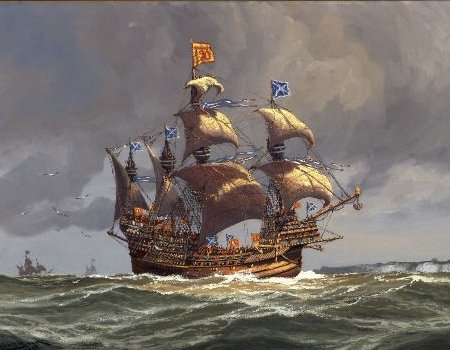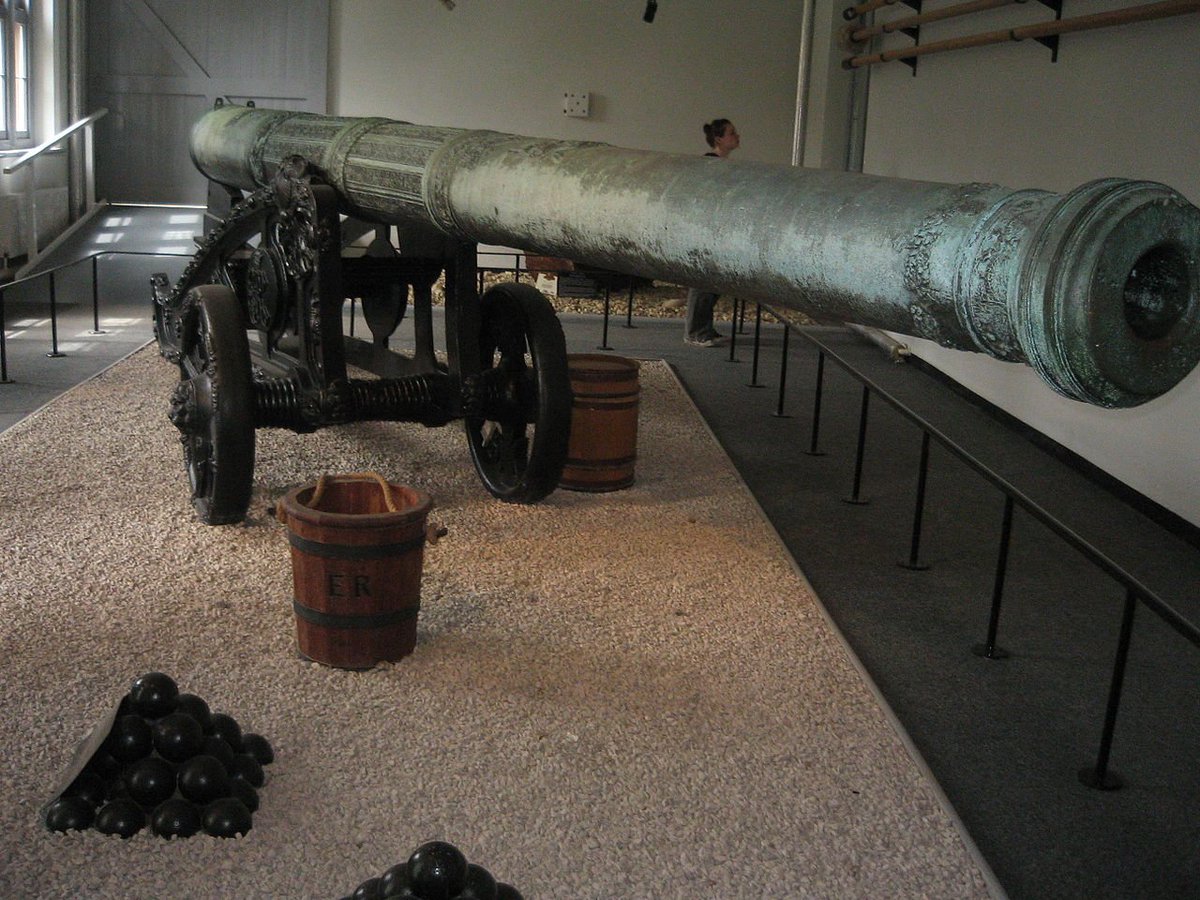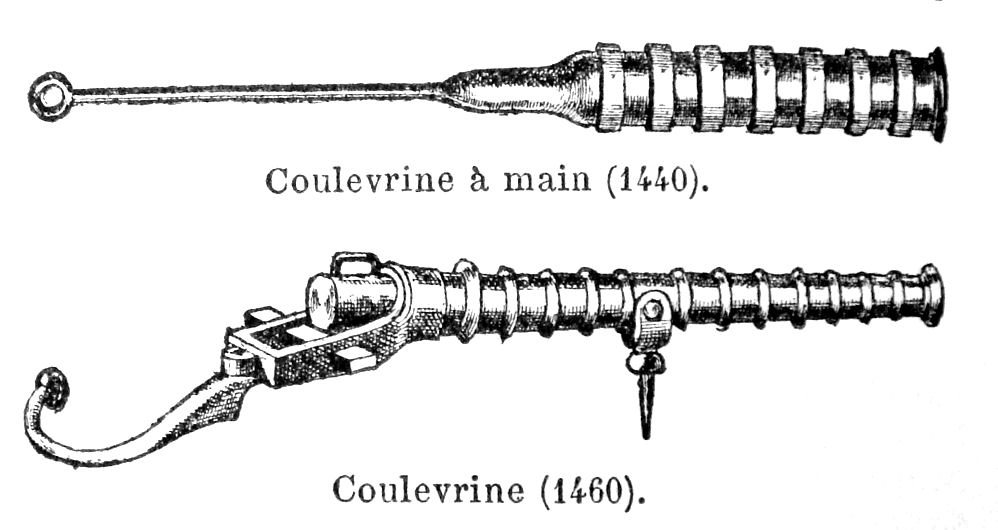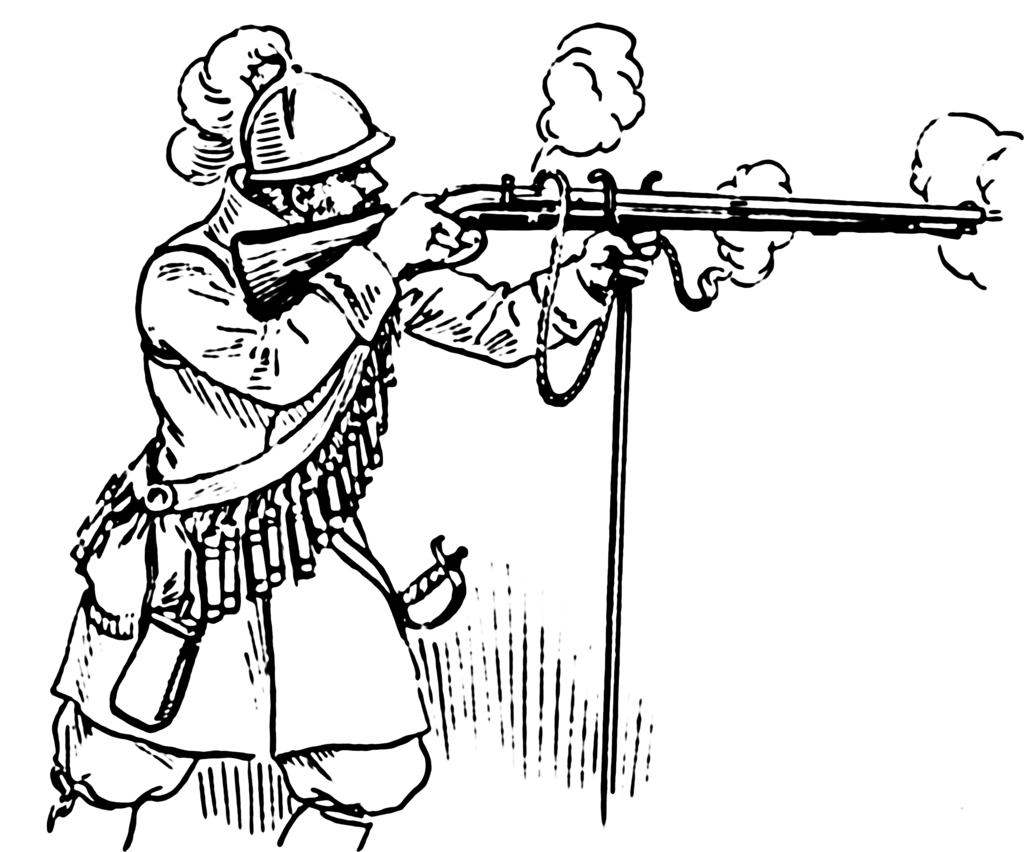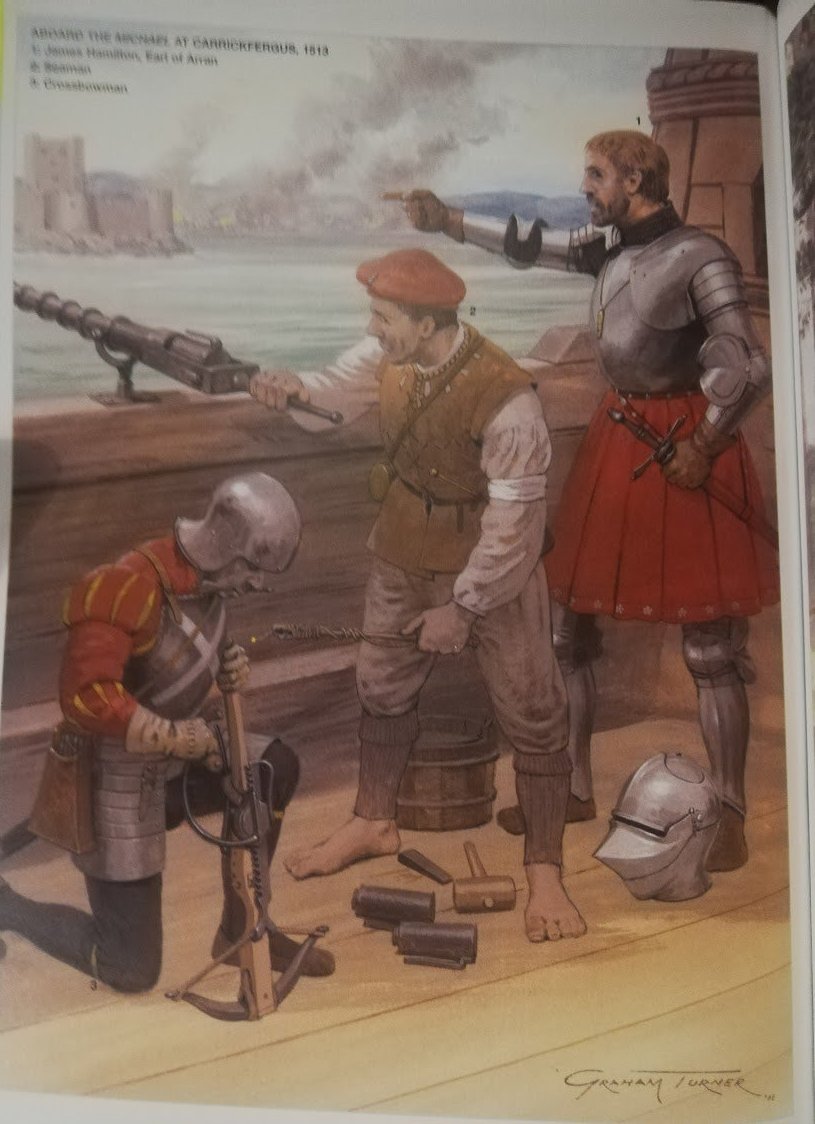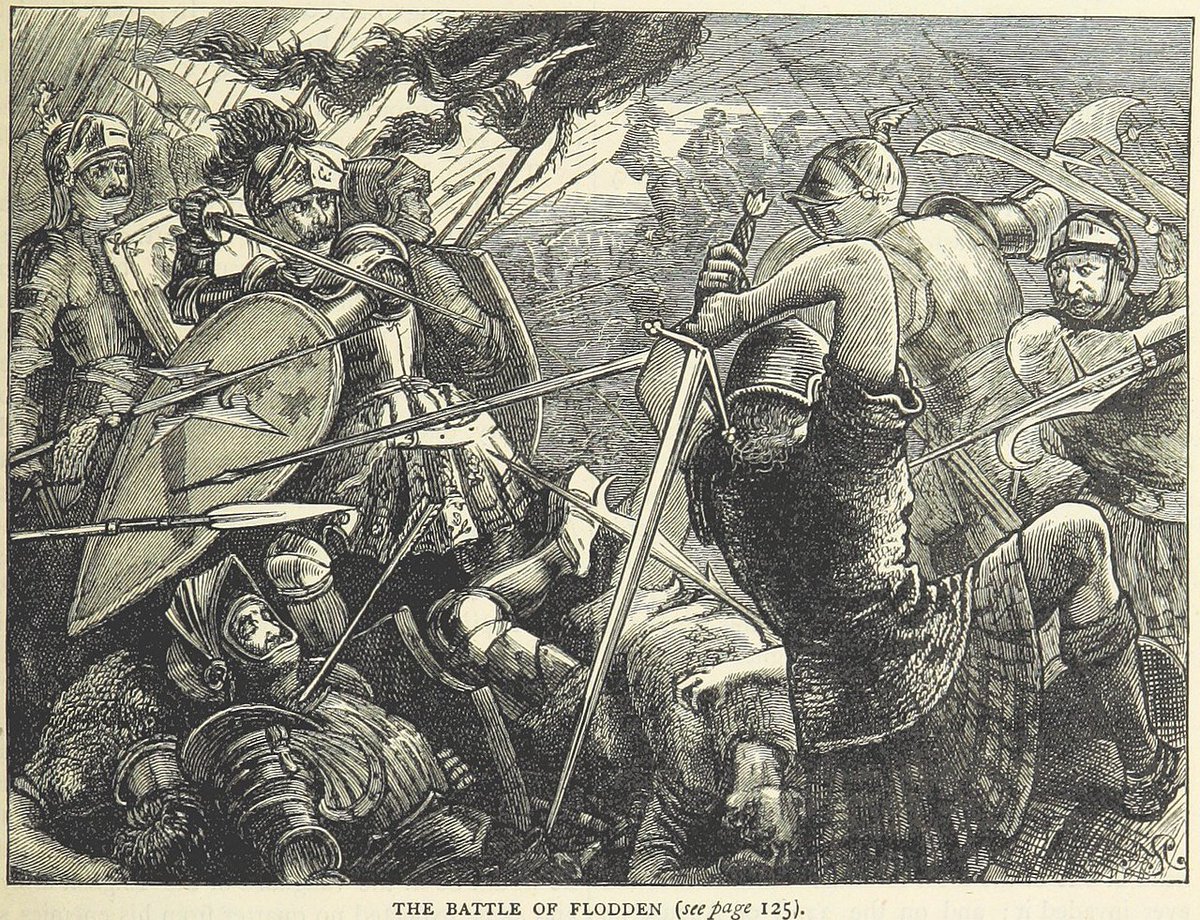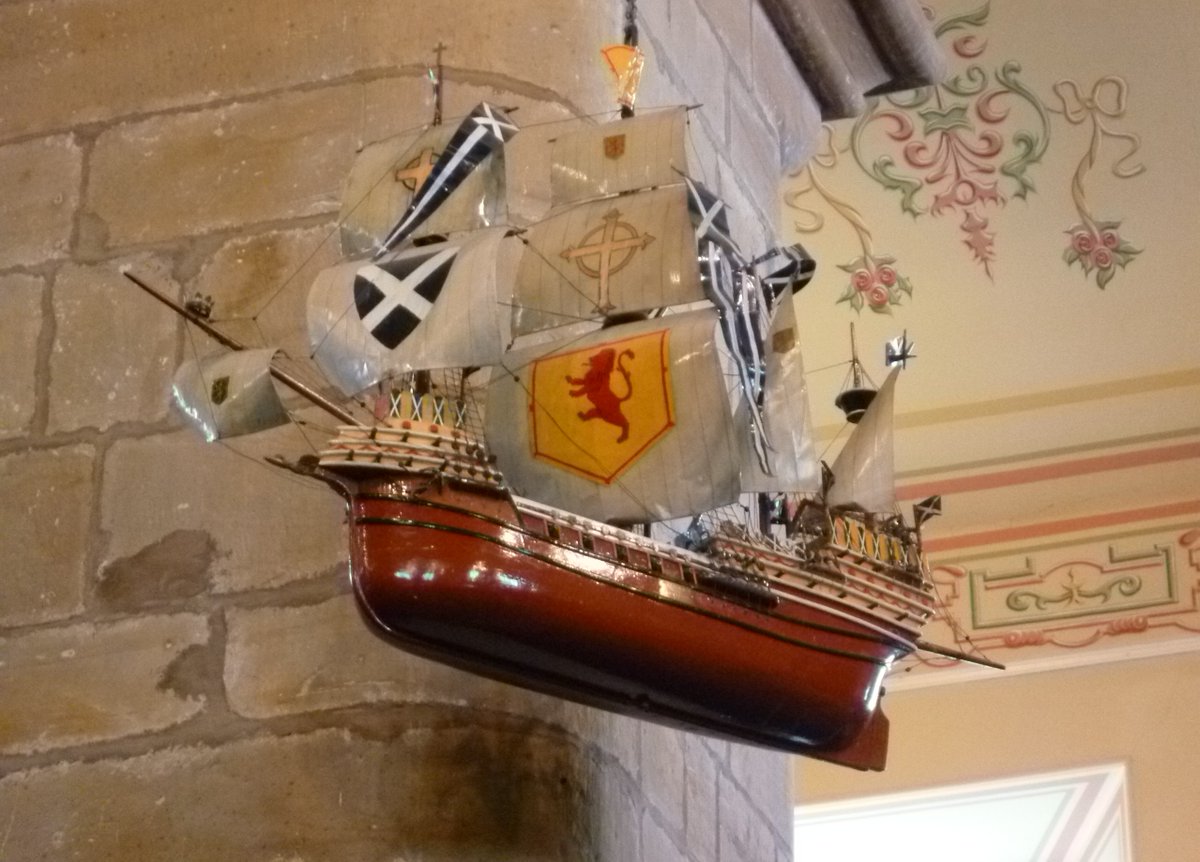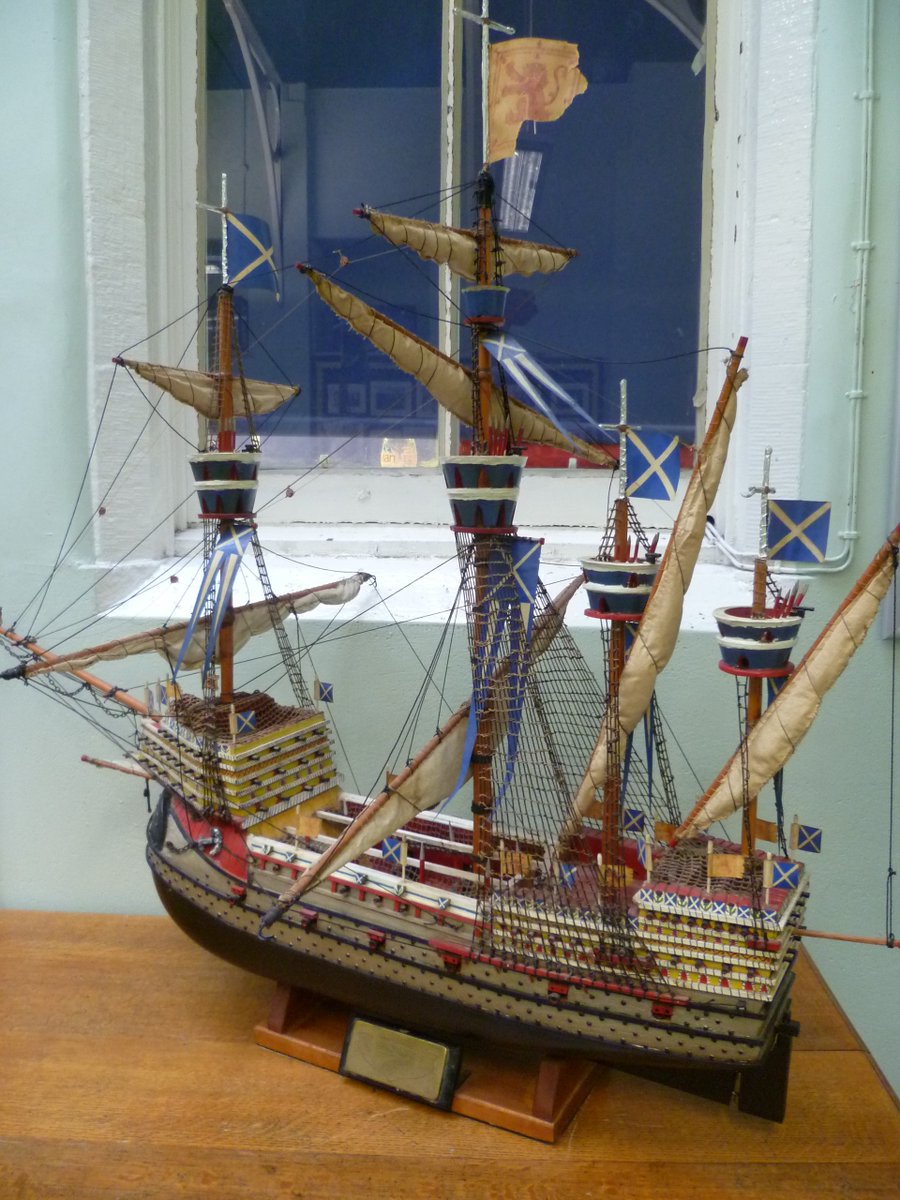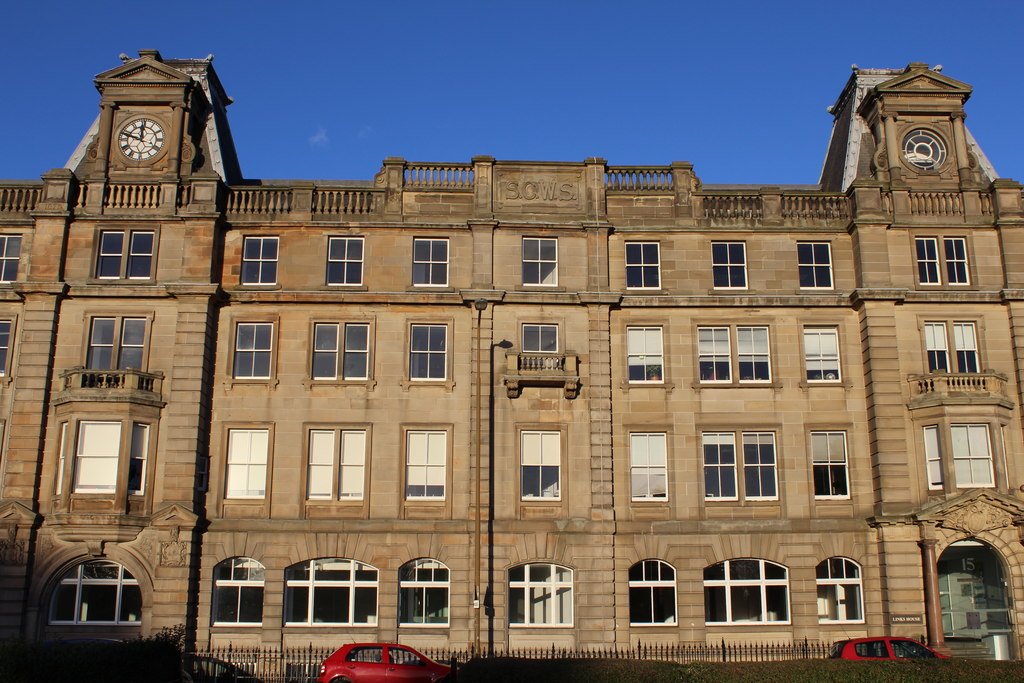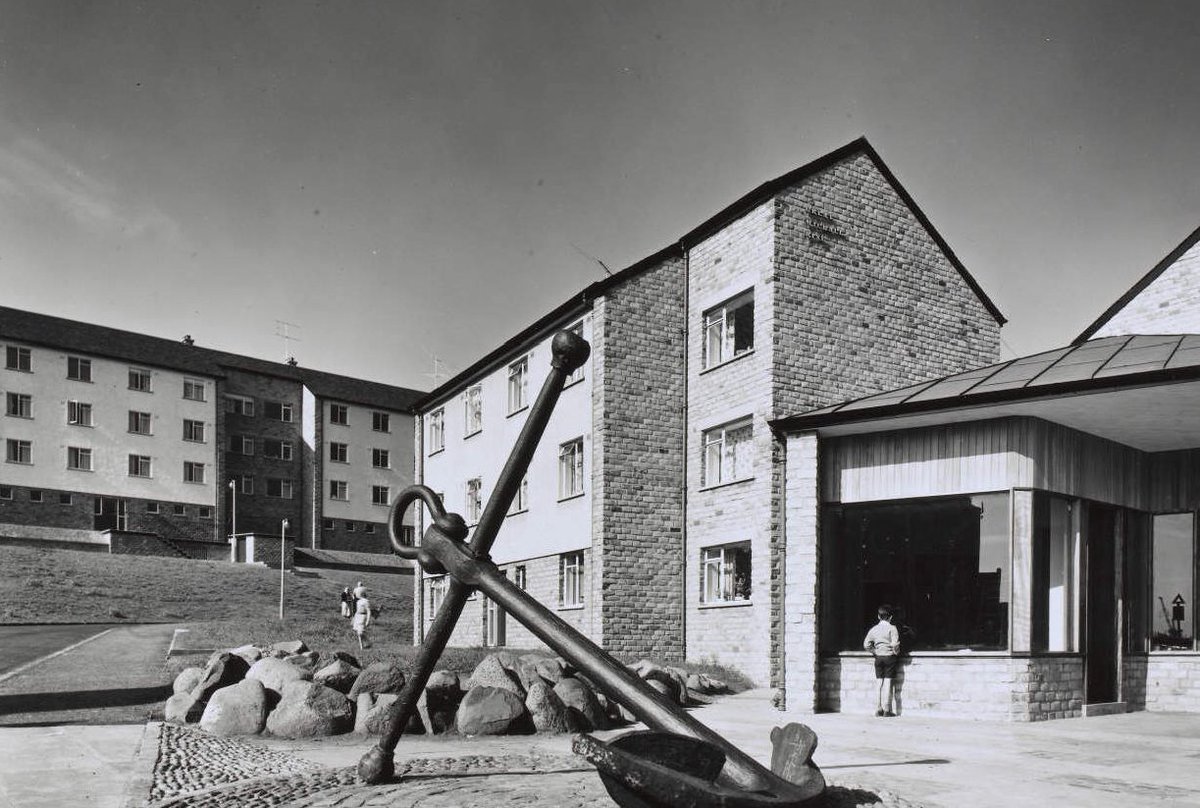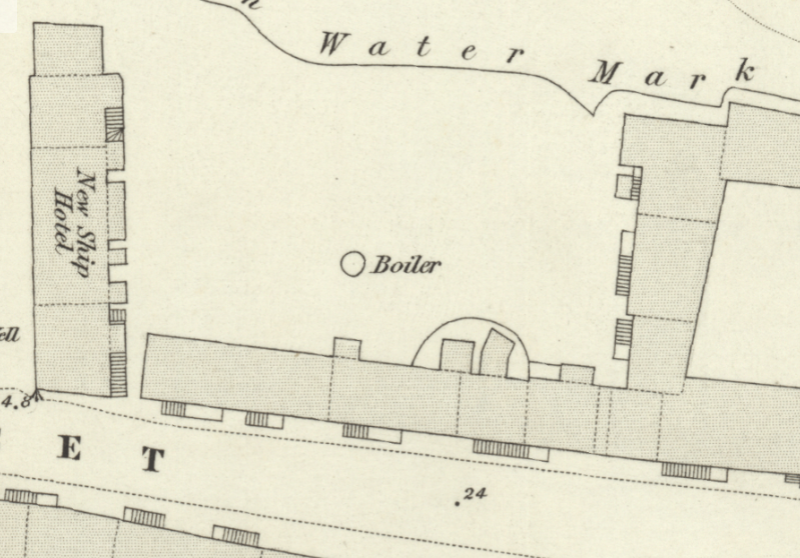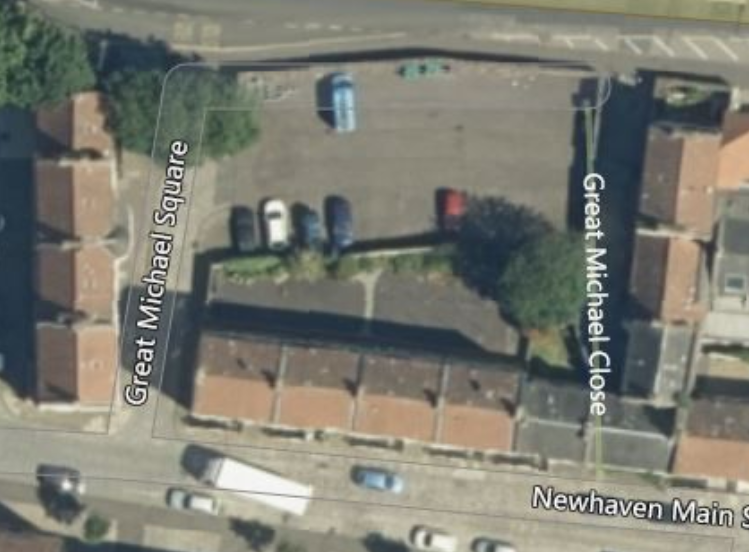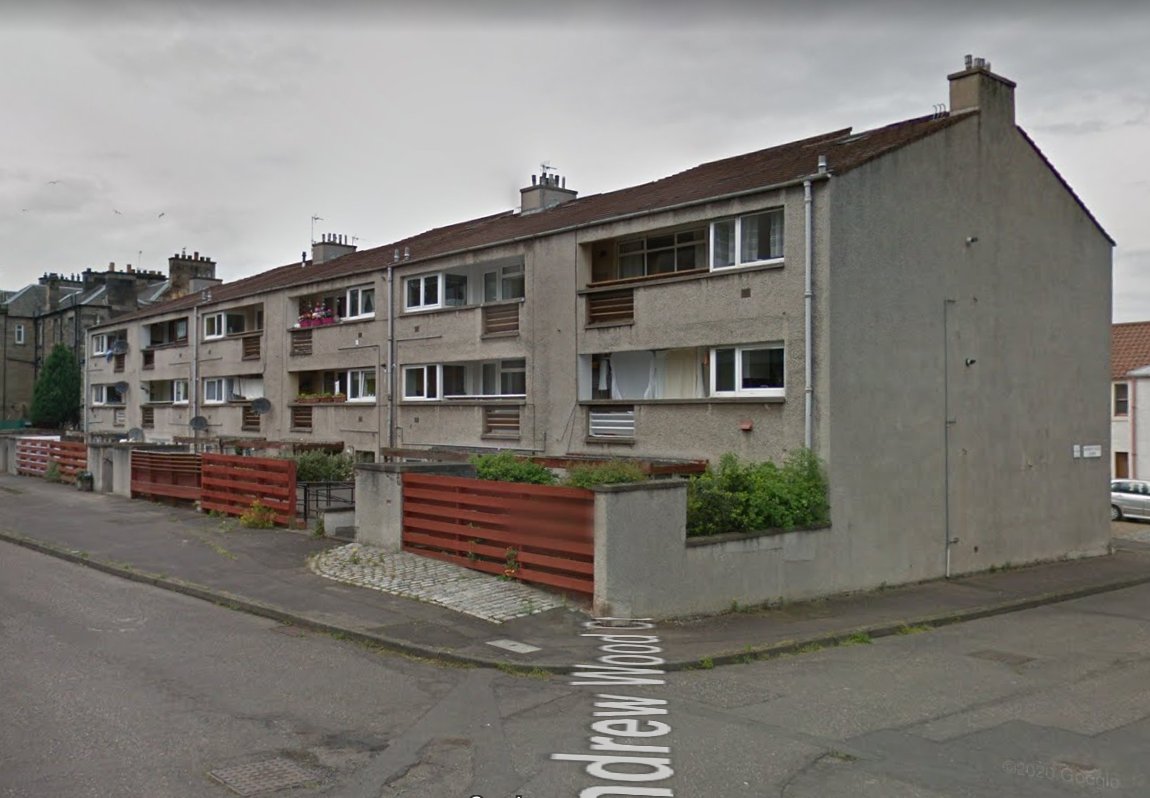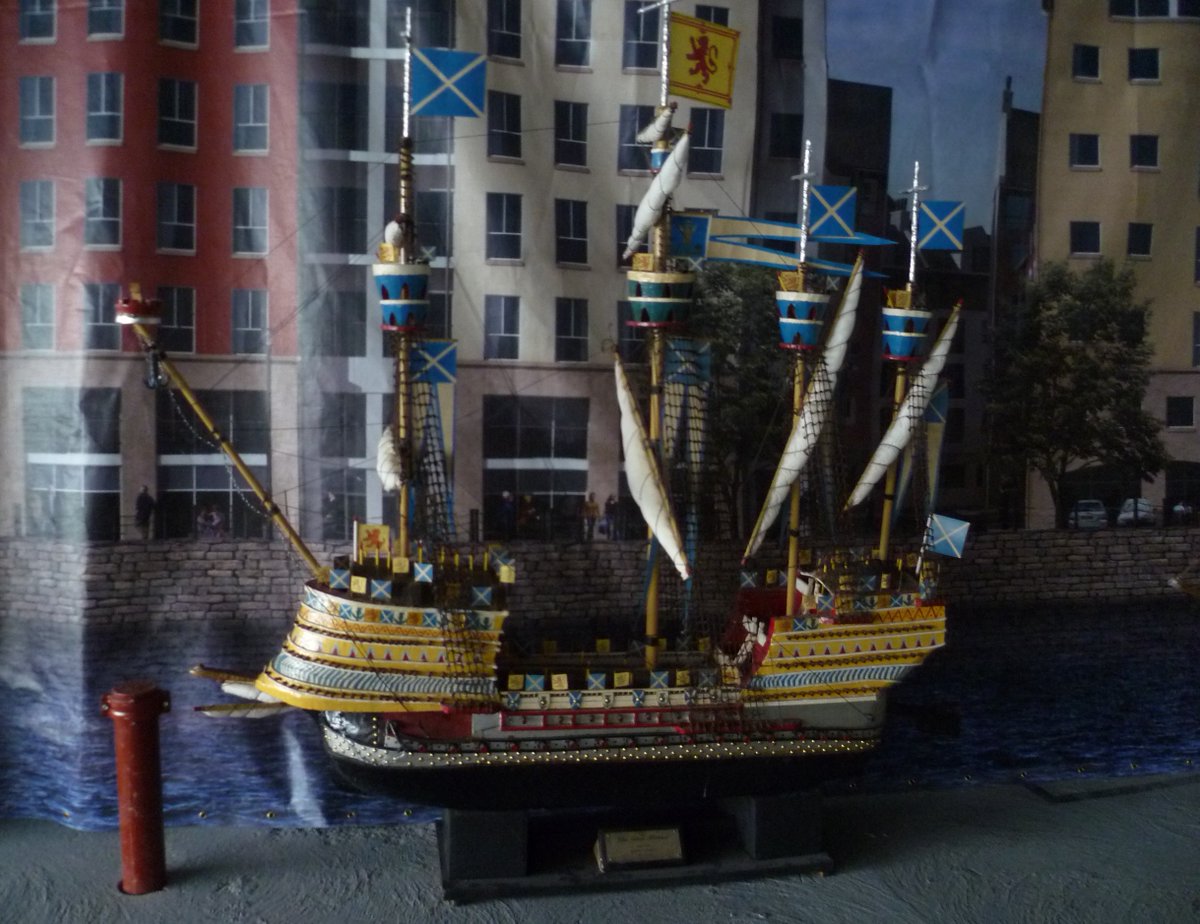I retweeted earlier about the "Great Michael", a warship launched on this day in 1509 for the Royal Navy of King James IV of Scotland. It& #39;s an intriguing tale of national extravagance and the very founding of Newhaven itself.
So how did a relatively small and unprosperous nation like 16th century Scotland come to build the largest warship in the western world at the time, and how did it come to be built in a sleepy little fishing village with no previous history in shipbuilding?
The answer lies with this man, King James IV of Scotland. James had a bit of an obsession with building up a navy for Scotland, you might say in modern terms it was a bit of a strategic policy.
The young King James was only on the throne a year when a small English fleet came sailing up the Forth setting fire to and ravaging the Fife and Lothian coast and all the shipping it could find. James demanded a response.
The only man who could take any form of action was Andrew Wood of Largo, a one-time privateer in the service of James III. Wood took what was at the time effectively the Scottish navy, the ships "Yellow Carvel" and "Flower" and set off to meet the English.
Wood was outnumbered 5-2, but had the wind behind him and aggressively took the initiative. He came upon the English near Dunbar and after a hard won fight he returned victorious to Leith with the English fleet as his prize
(Naval warfare at the time effectively involved getting close to your enemy, letting off a few smallish cannon at them, then locking yourself alongside and fighting it out man-to-man while archers in the tops took pot shots. Ships rarely sank, they were captured)
So Andrew Wood became a hero, and a loyal supported to the young King, upon whom the importance of sea power was now impressed. James set about building up his navy with great abandon.
There was a problem though in that Scotland had no ship-building industry to speak of. It lacked the masters and wrights and skilled labourers. So it had to be content to either impress captured ships or buy them from the Low Countries.
James couldn& #39;t get the English to build his ships, so attracted shipwrights from Normandy and Britanny to Leith to help him build the "Margaret" (named for his wife, Margaret Tudor). John Levans, arrived in 1502; "the French wricht that cam first for the schip bigging"
Between about 1502 and 1506, the "Margaret" was built with some difficulty at Leith. There were 2 big problems aside from labour and skills - "tymir" (oak timber) was in short supply, and the shipwrights scoured the country in to the Highlands looking for the correct sorts
The other was that Leith is a tidal port and the waters were just too shallow to effectively launch ships. Where "Margaret" was launched it required 100 casks to be lashed to the hull to help her float high enough to clear the sands.
But launched she was, the first big warship built in Scotland, and the biggest thing by far in the Scottish navy.
But James wasn& #39;t content to stop there, he had bigger ideas. Why build the largest warship in Scotland when you could build a warship bigger than the biggest thing that the English or the French or in fact any other known navy had?
But somewhere deeper to launch ships was needed. Jacques Terriel, another French shipwright, was charged with finding it. He didn& #39;t need to go far, 1/2 mile up the coast from North Leith the conditions were perfect, and so it was that the New Haven (New Harbour) was established
The new ship was to be named the "Michael", named after the archangel. A community grew up at Newhaven of wrights and crafstmen from France and the Low Countries, and much local labour besides. They toiled for over 5 years to build the huge ship.
The chronicler Pitscottie records " this scheip was of so greit statur and tuik so mekill timber that scho waistit all the wodis in Fyfe except Falkland wode, by all the tymmer that was gottin out of Noraway"
(or to put it another way, it was so big it took every tree in Fife apart from Royal trees and the rest had to be imported from Norway). The "great schipe cummerit Scottland to get hir to the sie" (it was hard work getting her launched), but launched she was.
The great ship is recorded as being "XII scoir of futtis of length and XXXV futte withtin the wallis; scho was X fute thik in the waill (240 feet long, 35 feet wide internally and with 10 foot thick walls) and "thik that na canon could gang throw hir"
With a displacement around 1,000 tons, she was the biggest thing around, by some margin. Not only that, but she had advances in her armament, in that she was designed from the start to fight with guns from a distance; "hir artaillye... was werie great and costlie to the king"
Pitscottie describes her armament thus; "cannons sex on everie syde witht thrie great basselis, tua behind in hir dock and ane befoir", In total 24 large brass guns and 3 "basiliks" the largest and heaviest ship guns of the time.
In addition "moyen and batterit facouns and quarter fallcouns (Middle, Bastard and Quarter Falcons), slingis (Sling gun), pestelent serpitantis (Serpentine guns), and doubill doggis (Dog guns)" - Tudor/Stuart artillery was generally named according to an animal-themed system
And not to be content with that, hagbut and cullvering, corsebowis and handbowis; Culverins were small hand-swung cannons and hagbuts were an early form of hand-held musket
On paper, the crew of the "Michael" was 300 mariners and 120 gunners. These men would sail the ship and fire the big guns, and in addition she could carry 1,000 "men of war" to man the small guns and bows and to carry out the boarding actions.
The "Michael", popularly the "Great Michael", put to sea some time in 1512. Appropriately Andrew, now Sir Andrew, Wood was her first captain. To test her, the King had a cannon fired at her when in Leith roads and it "deirit hir nocht and did her lyttill skaith"
It wasn& #39;t just her size and armament that was monumental, so was her cost. She took some £30,000 (Scots) to build, probably not including her artillery. She cost £500 a month in her crew& #39;s pay and £168 in victualling. At the time the national annual revenue was just £35,000!
This was clearly unsustainable for Scotland to support, but James had a plan; lease her to the French to fight the English with, and get his ally to pay for his largesse.
And so it was that the "Great Michael" went to sea at the head of the greatest Scottish naval fleet that ever did sail; 26 ships in total under the command of James Hamilton, Earl of Arran.
As a show of strength, Arran went first to Carrickfergus in Ireland to assist Irish rebels under Hugh O& #39;Donnell of Tyrconnell by bombarding the English. Arran succeeded in reducing the town to rubble and cinders, but had to leave for Ayr to resupply
He then headed south to France, but had missed the opportunity to catch the English fleet bottle up in Calais. Arran arrived in France with the Scottish fleet, but at around about the same time King James went and got himself and the "Flower of Scotland" killed at Flodden...
Flodden plunged Scotland into political and economic chaos and she was never in any position to support her giant fleet and giant flagship anyway, so she was sold to Louis XII of France for the knock-down price of £18,000 Scots, as "La Grande Nef d& #39;Ecosse" (The Big Scottish Ship)
And so it was that the "biggest ship in Christendom" came to be tied up at Honfleur, she drew too much to make it into Dieppe. What happened next is not that clear, but it& #39;s generally accepted that the French moved her to Brest and just let her rot, having never really used her.
The "Great Michael" was built at a crippling cost and served her King and country for less than a few months, and soon disappeared into obscurity, but she did retain something of a grip on the psyche of Leith and Newhaven for centuries.
In 1879, the Scottish Co-operative Wholesale Society built a grand office and warshouse on Leith Links called "Great Michael House" (the left half of the building) (pic = Geograph, Leslie Barrie)
And in 1957, Edinburgh Corporation built a new housing scheme in the Newhaven development area, designed by Basil Spence, as "Great Michael Rise" (pic Edinburgh City Libraries)
And in 1968, Parliament Square in Newhaven was renamed as Great Michael Square, with Great Michael Close adjacent, as part of an exercise to rationalise street names.
And not to forget the Lord High Admiral of Scotland, Sir Andrew Wood of Largo, who twice fought the English on unequal terms for King James IV and twice bested them? A small cul de sac of council flats.
Anyway, if you& #39;re still here, thanks for sticking with it. And if you& #39;re reading this from Newhaven, you can thank King James IV and his strategic maritime ambitions for that. (And all the pictures without source noted are CC-by-SA from Wikiemedia.)
Would you kindly unroll please @threadreaderapp ?

 Read on Twitter
Read on Twitter